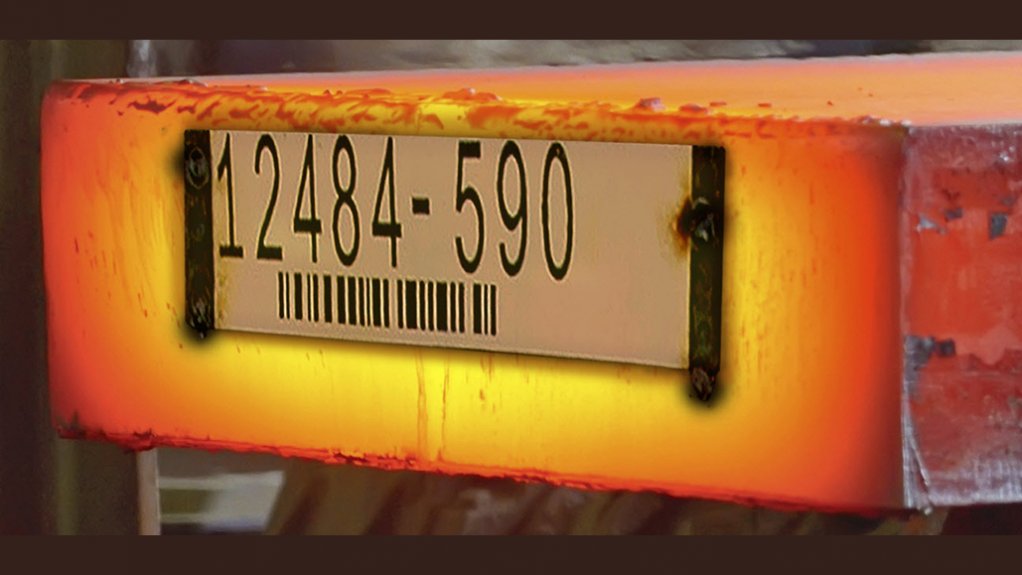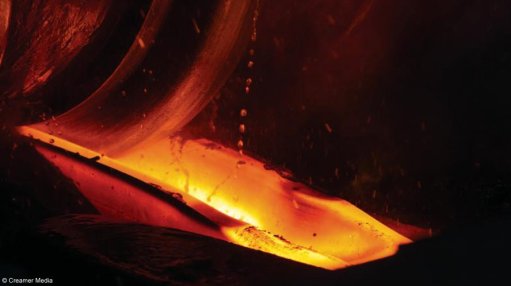Labelling a necessity to identify steel products


LABELLING STEEL PRODUCTS No matter the specific product, the labelling method/material must consider the original application and environment and downstream processes to ensure the durability of the identification
Labelling or identifying steel products is an absolute necessity in today's global steel market owing to the fact that the tracking of steel has posed problems in the past as a result of the many processes and stages that steel goes through before reaching its destination.
Industrial equipment supplier Traceabaility Solutions eliminates the loss of the item's history, allowing it to be traced through the various processes until it gets its final form. When, where, and how that occurs can vary from product to product. For example, the specific product shape, the purpose of the identification, stage in the manufacturing process, and what the labelling is subjected to downstream all have to be considered.
Marking methods can include: stamping -die punch/dot-peen; direct mark etching/laser, traditional labels paper/plastic/vinyl; stenciling ink/paint; radio-frequency identification; radio frequency tags; and other technologies. The generic term “label” includes identification via colour-coding, man-readable text, barcodes and logos.
Although the need for individual piece marking, regardless of size, is growing, smaller cross-sectional products are typically strapped and labelled as a bundle, whereas larger products are usually identified individually. For the steel industry, this means that plates, coils, billets, slabs and larger pipes are typically labelled separately. Conversely, bars, rebar, and smaller tubes are usually labelled as bundles.
Bundled products are typically labelled along the length of the bundle by running the banding strap through the pre-printed, slotted label. Alternatively, the tag can be affixed at the end face of the pile by attaching the tag to one of the pieces. Selecting just the right bar is the key to placing a single label on the end of the bundle.
Traditionally, this is a manual operation. However, recent advancements in machine vision technologies and machine control allow the process to be automated and used in day-to-day manufacturing environments efficiently.
Single long products, such as slabs, can also be on the end face or marked along their length. Although each position has advantages and disadvantages, the decision should be made based on the use of the identification downsteam such as reheat furnace or storage yard. For billets, bars, blooms, end face marking is preferred.
In a world where the demand for product security is ever-increasing, product identification that tells a story about the part is the first step. Who am I? Where have I been? When was I made? What inspection did I undergo? Who made me?
These are all relevant questions that need to be answered for the product's security, and the only means by which to obtain and maintain this information reliably is by direct part marking. Billions of parts manufactured for cars, aeroplanes, medical devices, electronic devices, military equipment, firearms, light weapons are all identified through direct part marking because these marks tell accurate stories instantly through two-dimensional barcodes.
This type of marking paves the way for the total lifecycle traceability of the product. Direct part marking (DPM) is a process by which a mark is made directly onto a product instead of the product being labelled. Once a part or product has a DPM, it allows instant access to information through the production process, supply chain and even to the end-user in some cases.
Tracking a part or component from birth to retirement allows manufacturers to improve product quality production processes and improve supplier compliance to quality standards. In the unfortunate event of a product recall, this process is made much easier and less expensive owing to all the information about the part being readily available.
No matter the specific product, the labelling method/material must consider the original application and environment and downstream processes to ensure the durability of the identification.
For example, to minimise the possibility of lost identification it is typically best to label a product at birth; this typically means the product must be identified at elevated temperatures, say 1 000 ºC, in the steel industry.
In turn, this requirement can drive the required labelling material and method. In addition to the thermal considerations, there are often other issues to consider, including chemical, mechanical (wear/abrasion), and ultraviolet light exposure. Labels, tags and markings can be designed and supplied specifically to survive harsh requirements such as annealing, hot dip galvanising – with exposure to caustics and acids, pickling, and shot blasting painting.
Labelling is often just a tool to facilitate automatic downstream identification of the product. Therefore, the labelling needs to include a barcode which is scanable via handheld or automated devices. Labelling steel products can be straightforward, or it can be challenging. A solution is likely available for the challenges or can be developed once the specific needs are defined.
Comments
Press Office
Announcements
What's On
Subscribe to improve your user experience...
Option 1 (equivalent of R125 a month):
Receive a weekly copy of Creamer Media's Engineering News & Mining Weekly magazine
(print copy for those in South Africa and e-magazine for those outside of South Africa)
Receive daily email newsletters
Access to full search results
Access archive of magazine back copies
Access to Projects in Progress
Access to ONE Research Report of your choice in PDF format
Option 2 (equivalent of R375 a month):
All benefits from Option 1
PLUS
Access to Creamer Media's Research Channel Africa for ALL Research Reports, in PDF format, on various industrial and mining sectors
including Electricity; Water; Energy Transition; Hydrogen; Roads, Rail and Ports; Coal; Gold; Platinum; Battery Metals; etc.
Already a subscriber?
Forgotten your password?
Receive weekly copy of Creamer Media's Engineering News & Mining Weekly magazine (print copy for those in South Africa and e-magazine for those outside of South Africa)
➕
Recieve daily email newsletters
➕
Access to full search results
➕
Access archive of magazine back copies
➕
Access to Projects in Progress
➕
Access to ONE Research Report of your choice in PDF format
RESEARCH CHANNEL AFRICA
R4500 (equivalent of R375 a month)
SUBSCRIBEAll benefits from Option 1
➕
Access to Creamer Media's Research Channel Africa for ALL Research Reports on various industrial and mining sectors, in PDF format, including on:
Electricity
➕
Water
➕
Energy Transition
➕
Hydrogen
➕
Roads, Rail and Ports
➕
Coal
➕
Gold
➕
Platinum
➕
Battery Metals
➕
etc.
Receive all benefits from Option 1 or Option 2 delivered to numerous people at your company
➕
Multiple User names and Passwords for simultaneous log-ins
➕
Intranet integration access to all in your organisation



















